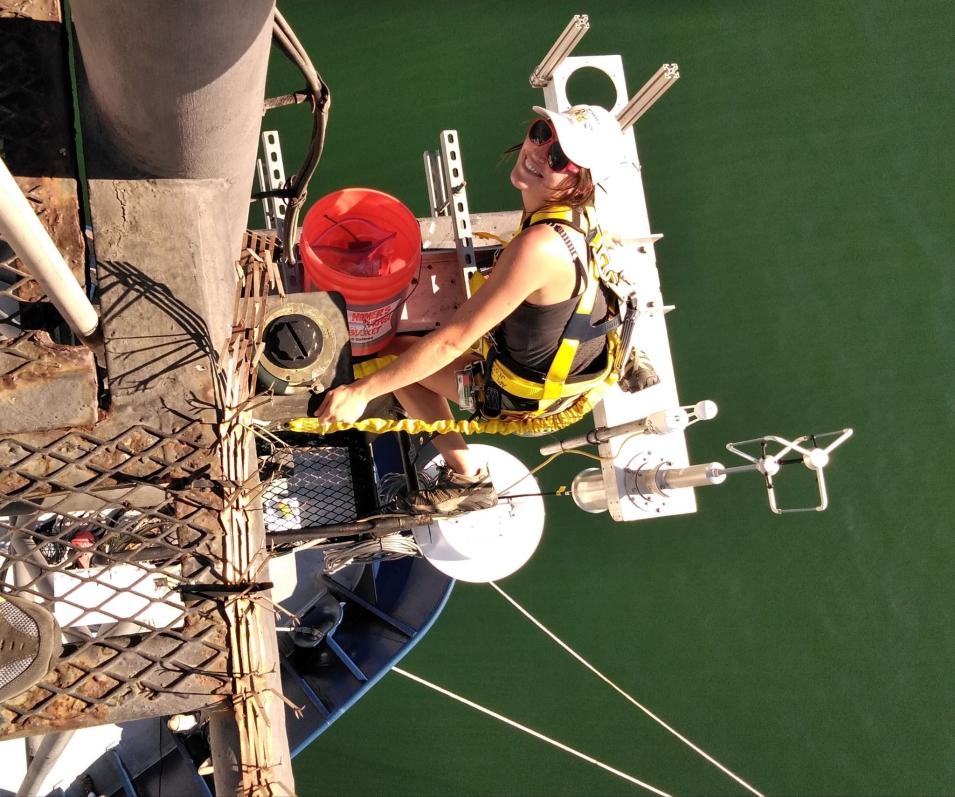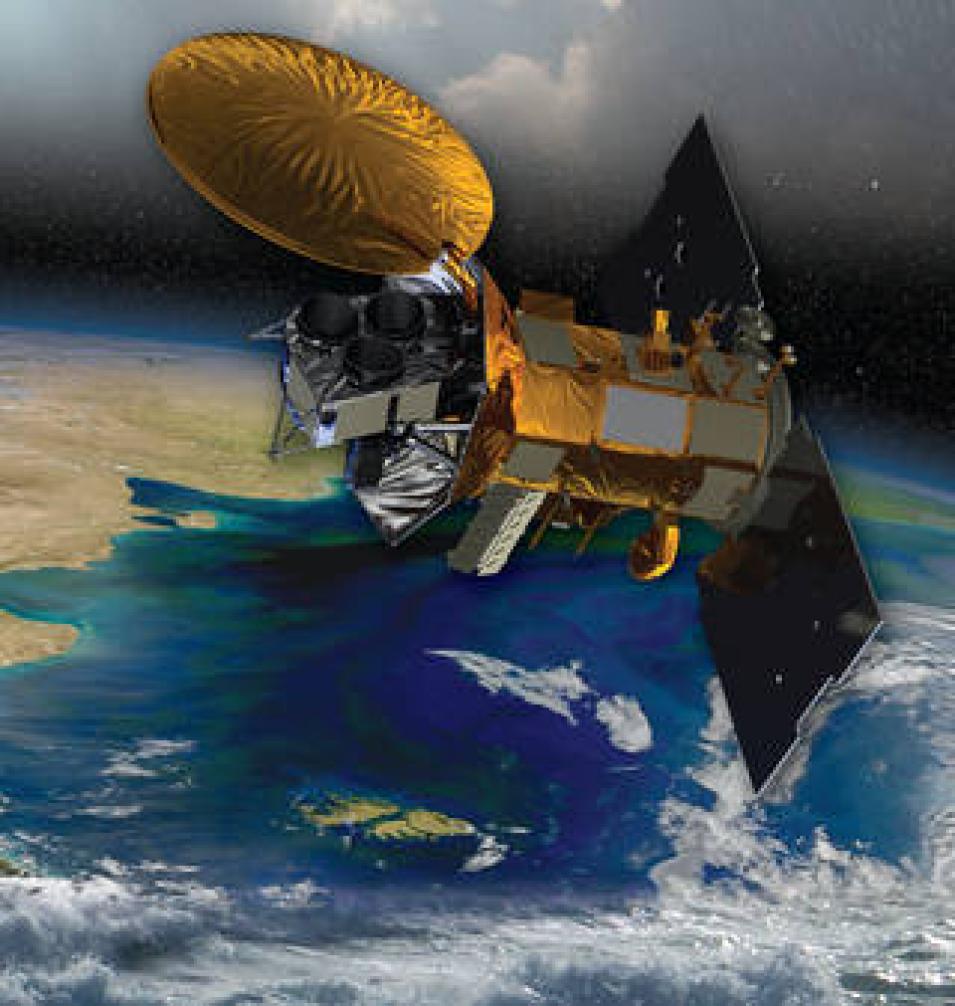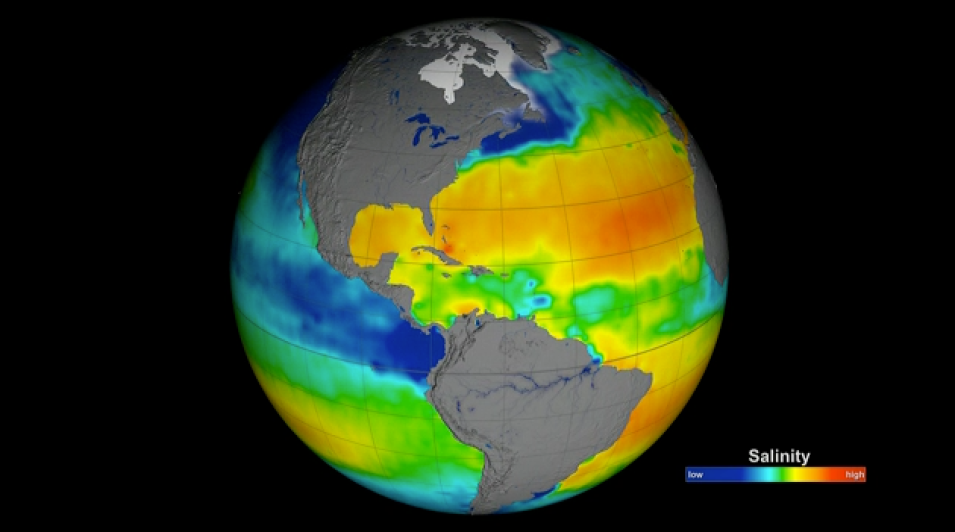Dr. Kyla Drushka, Principal Oceanographer at the Applied Physics Laboratory, University of Washington
Research Interests: Understanding the dynamics of the upper ocean and, in particular, the effect that variations in ocean salinity (the concentration of dissolved salts in seawater) may have on and near the ocean surface. In rainy tropical regions and the Arctic, salinity sets the structure and stability of the “mixed layer” – the well-mixed part of the upper ocean that comes into contact with the atmosphere. As a result, changes in salinity caused by precipitation, evaporation, ice melt and freezing, river runoff, or ocean currents can have large impacts on the amount of heat, momentum, and gas exchanged between the ocean and the atmosphere. This, in turn, can have a significant effect on weather and climate.
Research Highlights: Everyone knows seawater is salty, but far fewer know how it got that way and what roles saltiness, or in the vernacular of oceanography, salinity, plays in ocean structure and dynamics. Salinity refers to the concentration of salt in seawater and several natural processes, including the weathering of rocks, the evaporation of ocean water, and the formation of sea ice, contribute to it. At the same time, these salinity-increasing processes are balanced by salinity-decreasing actions, such as the flow of fresh water into the ocean, precipitation in the form of rain or snow, and melting ice.
Scientists have learned that even small variations in ocean surface salinity can have dramatic effects on ocean circulation and structure, particularly near the surface. Ocean circulation is primarily driven by changes in seawater density, and density is determined by salinity and temperature. Given that the top three meters of the ocean stores more heat than the entire atmosphere, density-controlled ocean circulation (that is, when the dense ocean water sinks and joins deep ocean currents) plays a key role in transporting heat around the world and maintaining Earth's climate. Scientists know the ocean absorbs and transports the excess heat associated with the rise in global temperatures that has occurred during the last century. Further, studies suggest that ocean salinity is decreasing at high latitudes and in tropical areas that experience frequent rain, and increasing in the seawater of Earth’s sub-tropical, high-evaporation regions. Such changes in the water cycle could significantly impact not only ocean circulation, but also the climate in which we live. For example, ocean currents act much like a conveyor belt, transporting warm water and precipitation from the equator toward the poles and cold water from the poles back to the tropics. In doing so, ocean currents regulate global climate, helping to counteract the uneven distribution of solar radiation reaching Earth’s surface. Without currents in the ocean, regional temperatures would be more extreme—super hot at the equator and frigid toward the poles—and much less of Earth’s land would be habitable.



